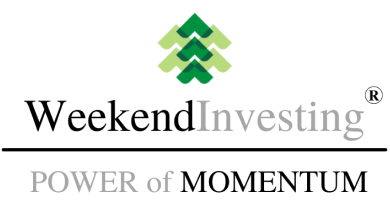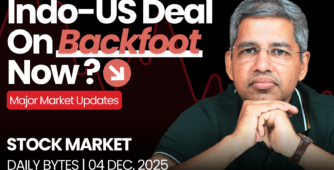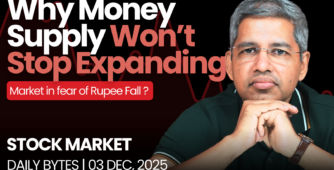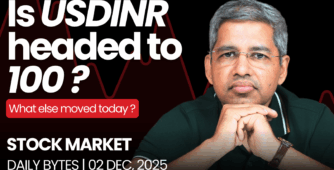
Where is the market headed?
It was a rather uneventful day in terms of volatility—very smooth, with the markets gradually inching up. The EU tariff issue that emerged after Friday’s close has, as expected, been postponed again. Trump tends to use such situations to stir panic, but when deadlines approach, he usually pushes them back. As a result, the global markets aren’t paying much heed to his warnings.
Market Overview
In the last two sessions, the market has climbed back near recent highs, closing at 25,000 with Nifty up by 0.6%.
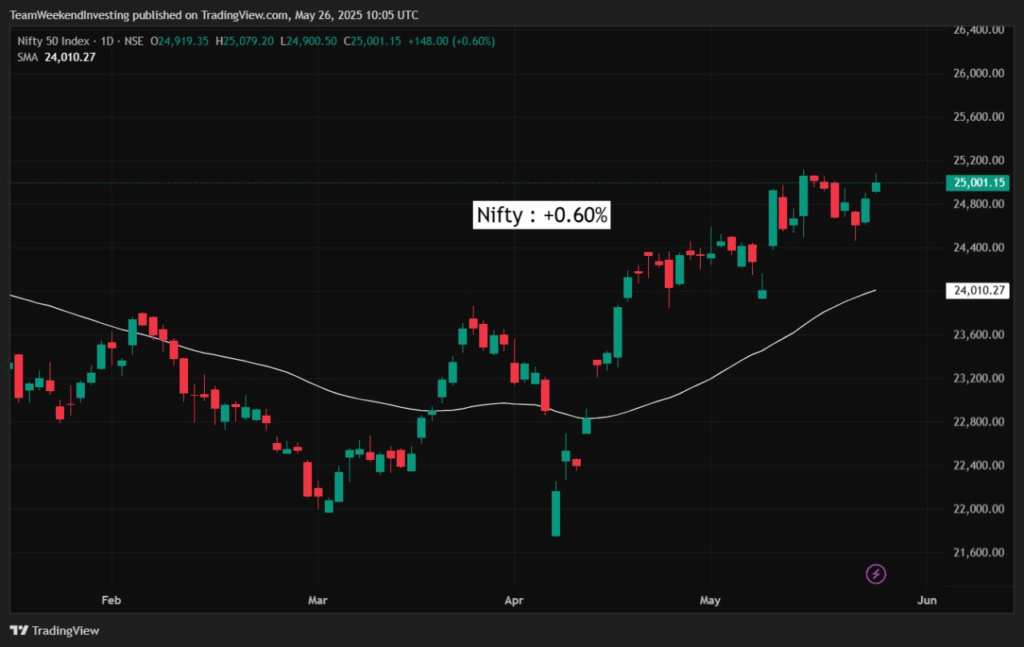
Nifty Next 50
Nifty Junior also gained 0.4% during this period.
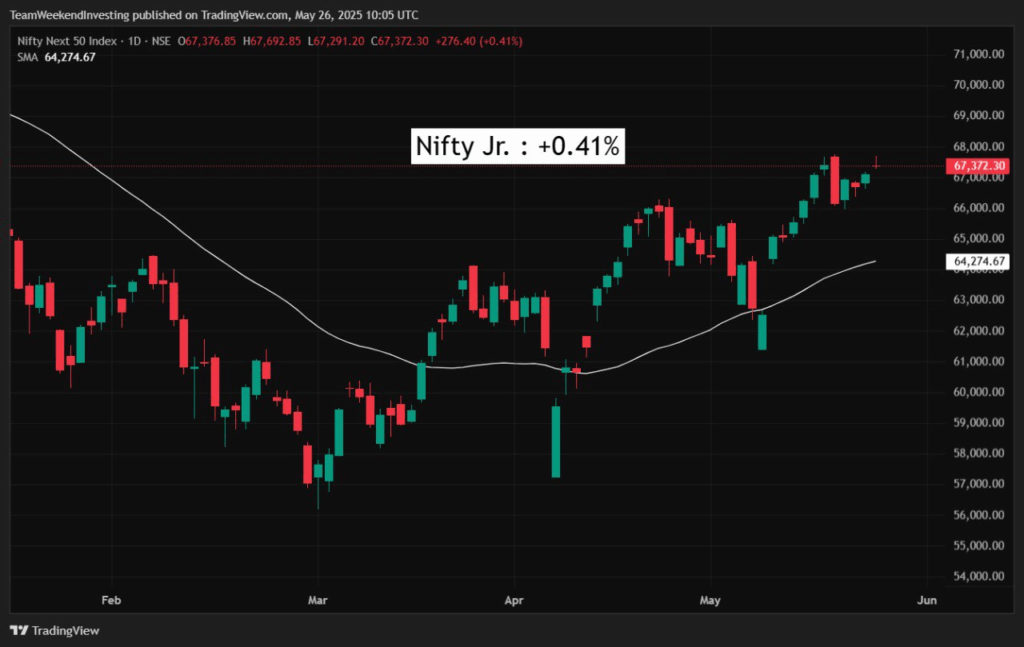
Nifty Mid and Small Cap
Mid caps rose by 0.56%, while small caps increased by 0.52%. Overall, the market experienced no major volatility.
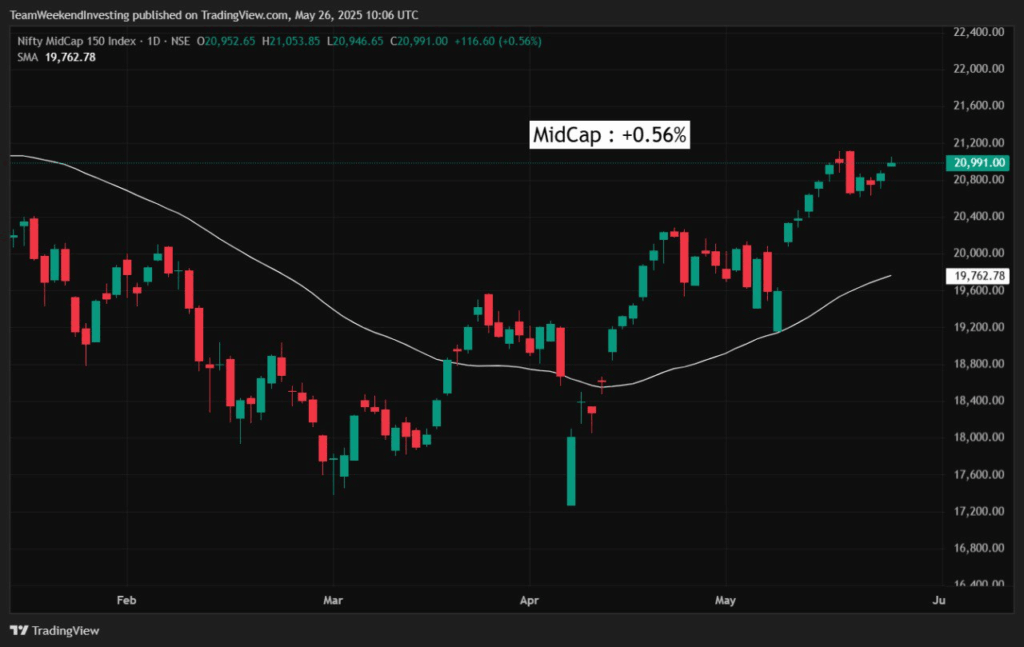
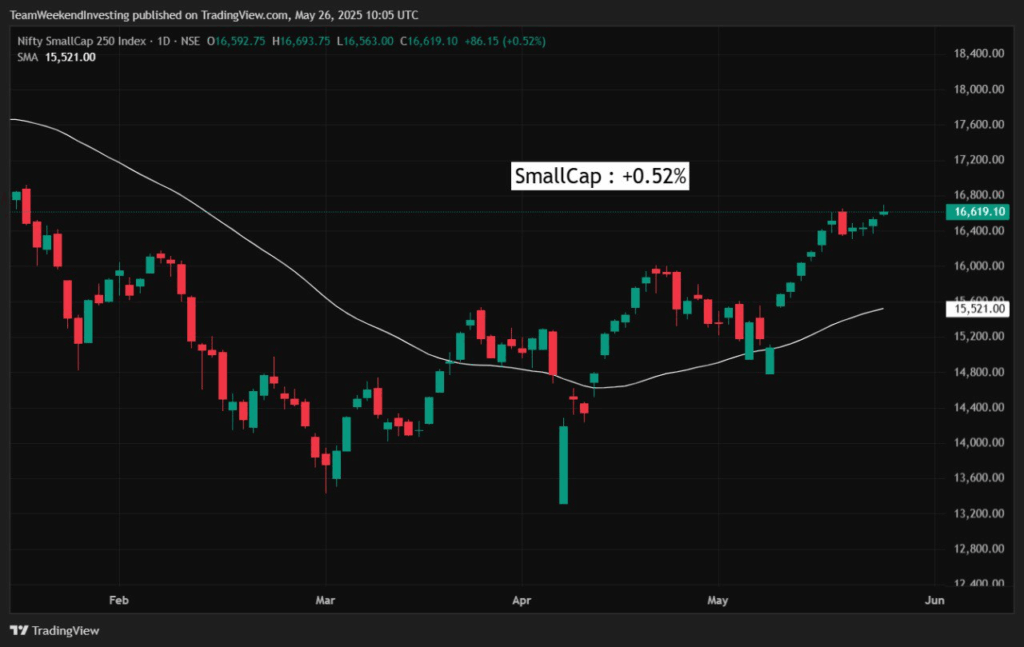
Bank Nifty
Bank Nifty also closed higher, up 0.3% at 55,500.
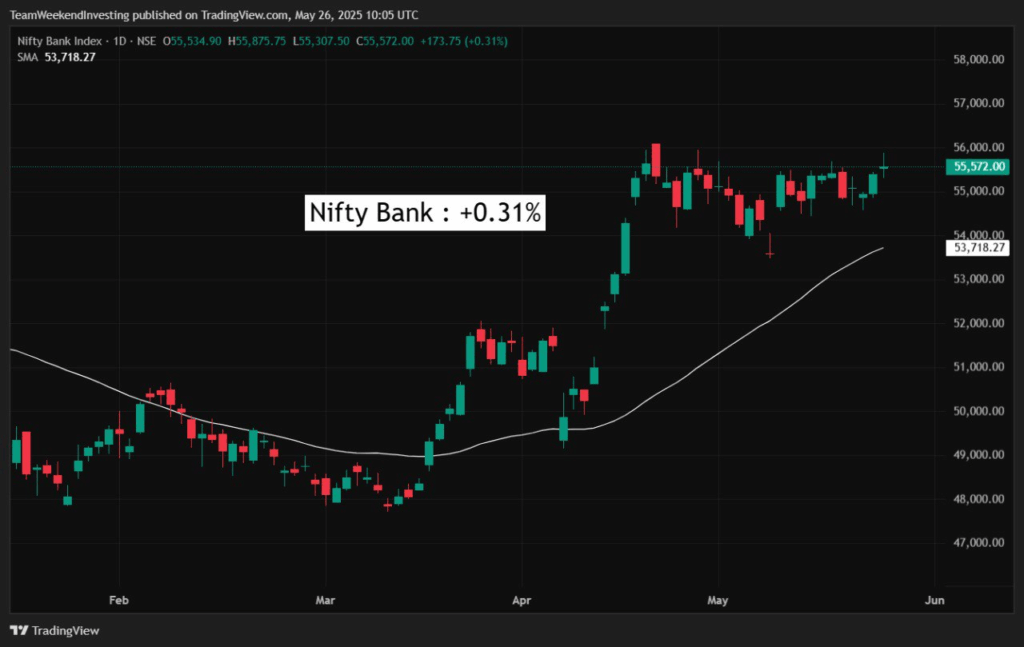
GOLD
Gold declined today by 0.92%.
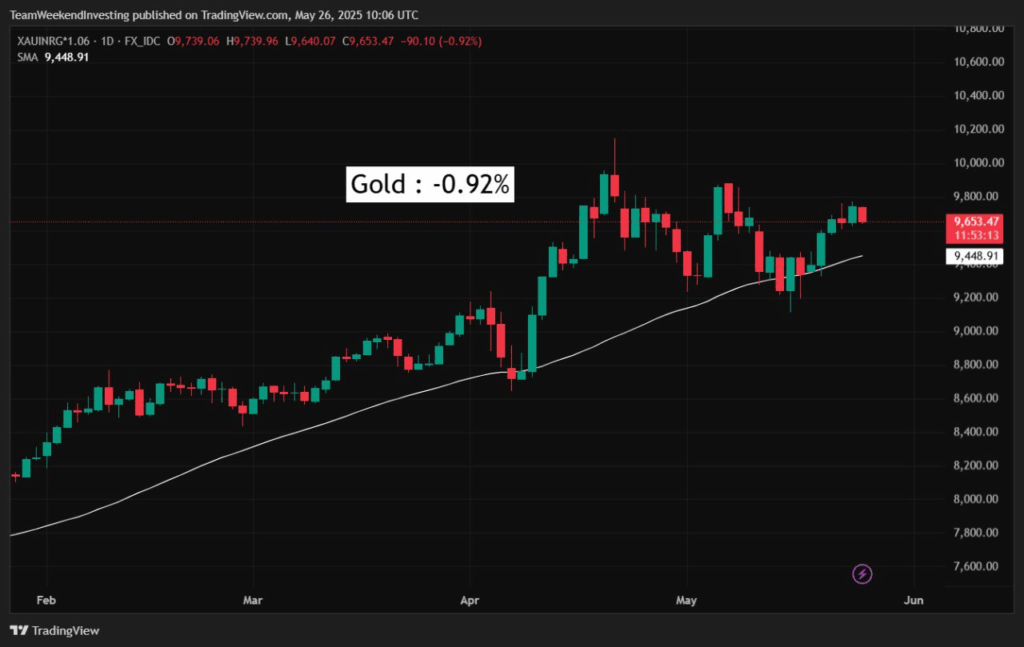
Advance Decline Ratio
The Nifty 500 saw an advance-decline ratio of 321 to 175.
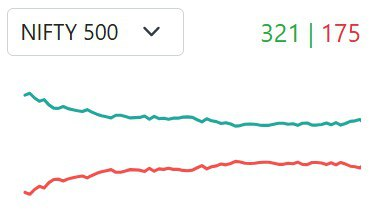
Heat Maps
The heat map is reasonably green, with FMCG, Auto, IT, and Steel stocks all participating. There is no major red except for Eternal, which appears to have formed a strong top and is now declining rapidly. Inclusion in the Nifty has not supported Eternal’s performance.
In the Nifty Next 50 space, some Real Estate stocks are showing strong moves, while there are losses in ICICI General Insurance, Indigo, and others.
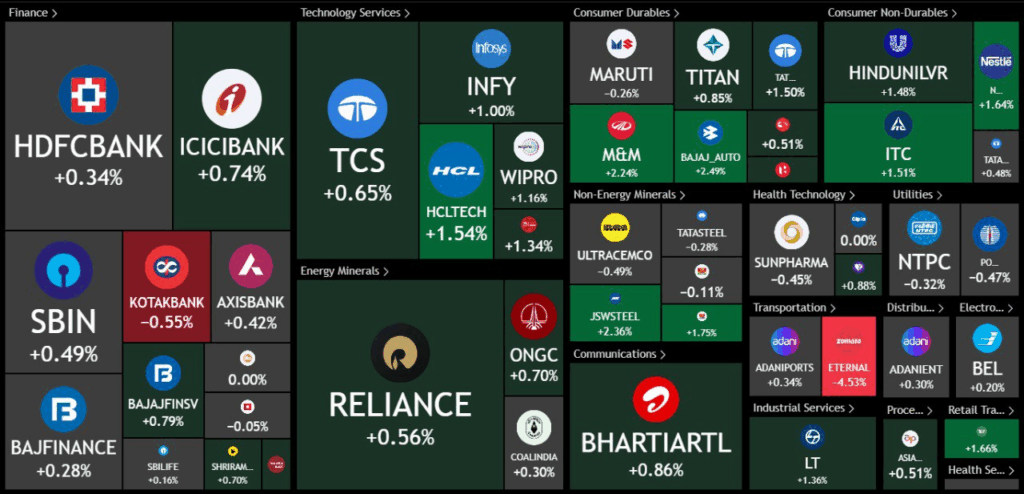
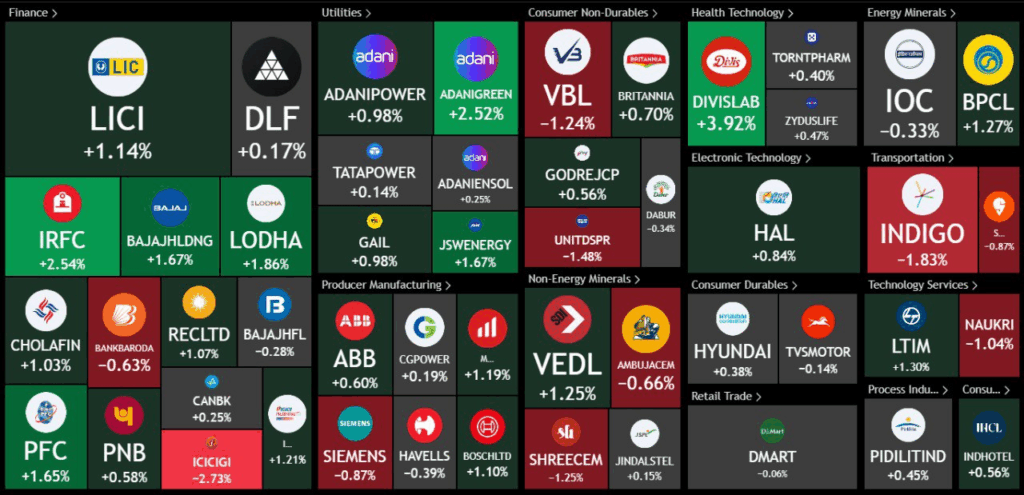
Sectoral Overview
Sectoral trends show the Defense sector leading again, up 1.1% for the day and 4.26% for the week. The Auto sector also performed well, rising 1%, along with IT stocks, which gained around 1%. FMCG recovered strongly after ITC’s results, closing nearly 1% higher. Metals continued their positive momentum with a 0.94% rise. Meanwhile, Tourism, Central Public Sector Enterprises, and Capital Market stocks remained mostly flat.
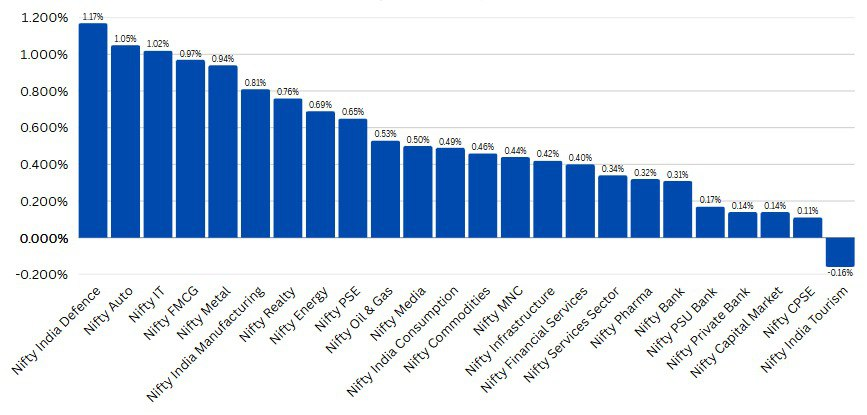
Sector of the Day
Nifty Auto Index
Autos gained 1% today, led by strong performances from Bajaj Auto, Mahindra, MRF, Samvardhana Motherson, and Tata Motors.


Nifty Ind Defence
The defense sector led the market, rising 1.1% today and gaining 4.26% over the week. It continues to show strong momentum.
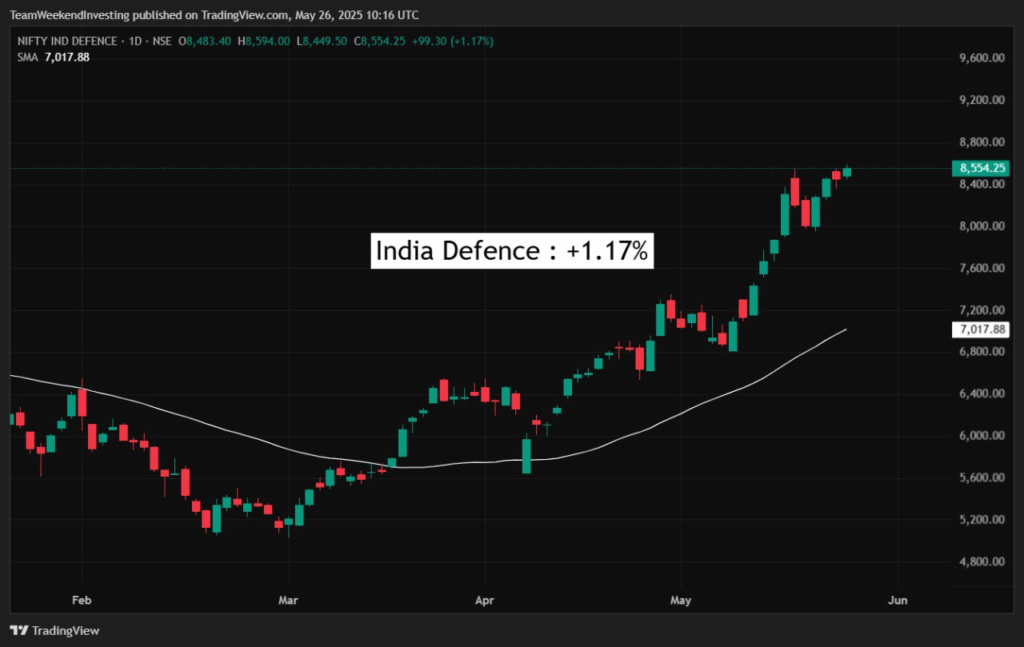
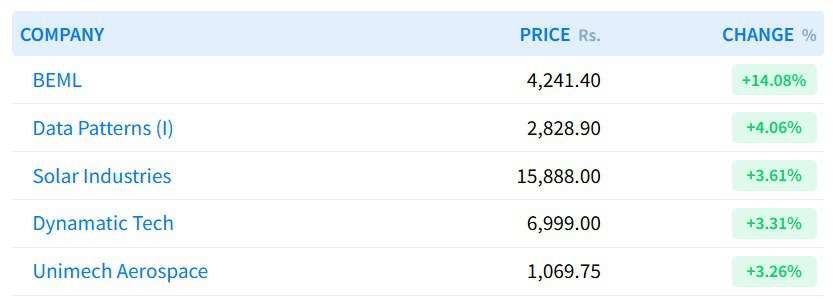
Story of the Day: Balancing Equity, Debt, and Gold
Making consistent money is simple—there’s no question about it. It is straightforward and a hard fact. Let’s examine how various asset allocations have performed over the last ten years.
For equity, we are using the Nifty 500 index; for debt, the Crystal Composite Bond index; and for gold, the Nippon India ETF Gold Bees. These are among the most liquid and active counters. The following asset allocation quilt shows different combinations for each year.
For instance, the top-performing portfolio in 2015 and 2016 was 20% equity, 60% debt, and 20% gold. In 2017, the 70% equity, 20% debt, and 10% gold mix performed best.
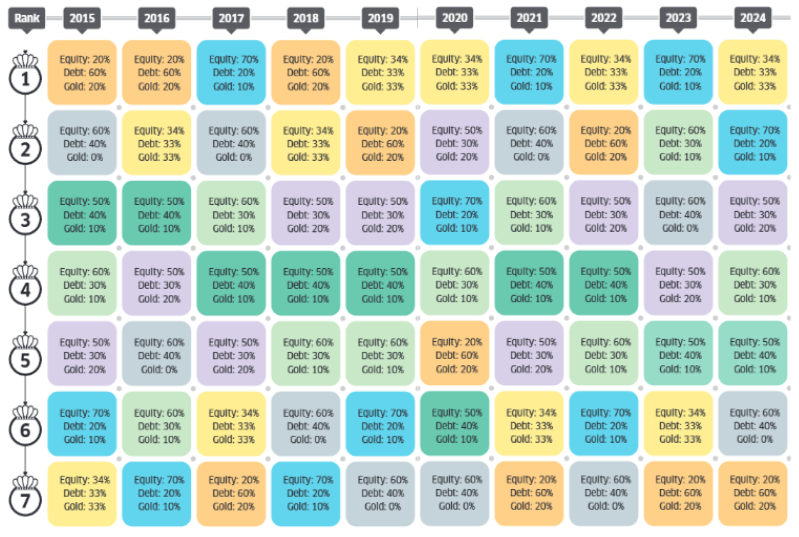
In 2018, again the 20% equity portfolio led. In 2019 and 2020, equal-weight portfolios—roughly one-third each in equity, debt, and gold—were the best performers. 2021 saw equities in a strong trend with 70% equity doing well, and 2023 and 2024 followed a similar pattern.
Looking at the worst performers, in 2024, 60% debt, 20% gold, and 20% equity ranked lowest. This was also true in 2021 and 2023. Portfolios with 60% equity and 40% debt but no gold also performed poorly in 2020 and 2022.
When ranking the average performance over ten years, the 60% equity, 40% debt, zero gold portfolio ranked 4.7, while the 70% equity, 20% debt, 10% gold portfolio ranked 4.0, slightly better. (See the image)

A portfolio with 50% equity, 40% debt, and 10% gold scored 4.2, and 60% equity, 30% debt, and 10% gold scored 4.1. Increasing gold exposure to 20% improved rankings further, with one portfolio scoring 3.7. A debt-heavy portfolio with 20% equity, 60% debt, and 20% gold scored 4.0, close to the higher equity ones.
The best average ranking, 3.3, came from a portfolio equally divided among equity, debt, and gold. This shows portfolios with more gold exposure have generally performed best over the last decade.
Key takeaways are that balanced portfolios consistently win. High debt, low-return portfolios—especially those without gold—have frequently ranked near the bottom. Equity-heavy portfolios experience higher volatility, with both the best and worst years.
Since 2020, portfolios with gold exposure have avoided major losses, whereas those without gold suffered losing years. This highlights gold’s crucial role in protecting returns.
Different asset allocations suit different investors. Some may prefer equal splits; others may favour higher equity. Regardless, maintaining an asset allocation and regularly rebalancing the portfolio is essential for better outcomes.
WeekendInvesting launches – The Momentum Podcast
This episode of THE MOMENTUM PODCAST features Manubhav, a third-generation real estate professional, sharing his unique journey navigating both worlds.
Discover:
✅ FROM PROPERTY TO PORTFOLIO: Manubhav’s transition from his family’s established real estate business to exploring equity investments.
✅ MARKET WISDOM: His candid experiences with market swings, including COVID-19’s impact on his SIPs, and lessons learned from F&O and smallcase.
✅ THE BIG COMPARISON: A fascinating look at real estate vs. equity returns, featuring real-world numbers from his family’s 40-year property investment.
✅ UNCOMMON INSIGHTS: Why gold is a family favorite and the surprising state of equity investing in smaller Indian towns.
